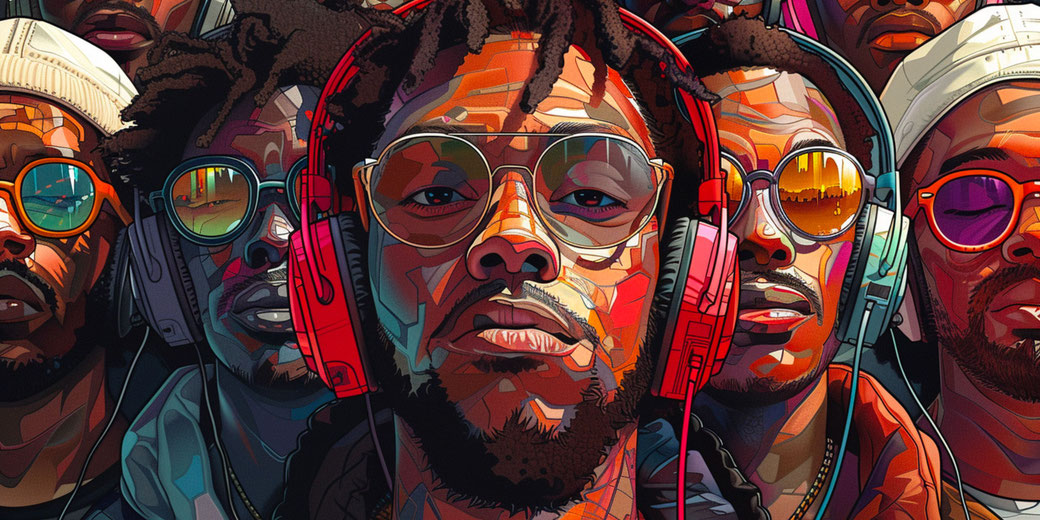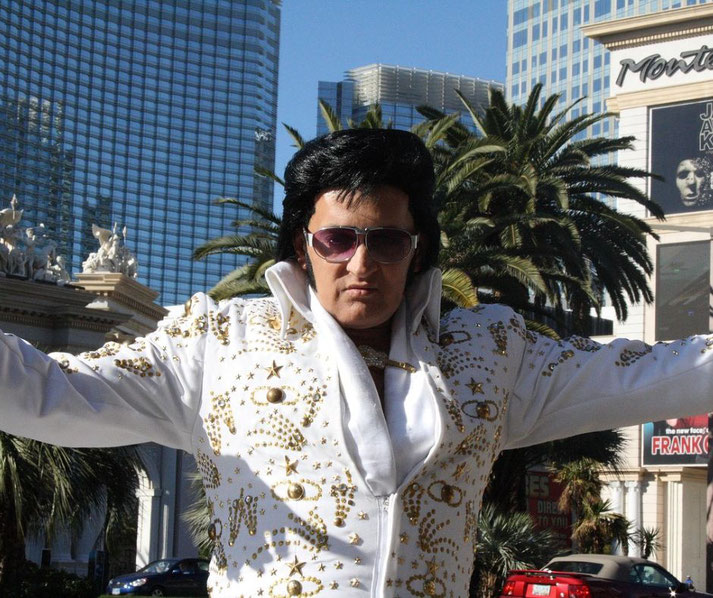How 'pop culture' defined the 20th century

Pop culture is the heartbeat of modern society, from the catchy tunes that get stuck in our heads to the blockbuster movies that captivate millions of people from all around the world.
However, it is an ever-evolving phenomenon that has reflected and influenced the cultural mood of each generation.
As a result, it is like a mirror held up to society, through which we can learn about the popular trends, attitudes, and values that define each decade's hopes and fears.
What is 'pop culture'?
Pop culture, short for 'popular culture', encompasses the ideas, perspectives, attitudes, images, and other phenomena that are within the mainstream of a given culture.
It is particularly focused on Western culture of the early to mid-20th century and the emerging global mainstream of the late 20th and early 21st century.
At its simplest, pop culture is the entertainment that people enjoyed at any given time in history.
This can be the songs, movies, books, and even computer games, that most people engaged with.
Since tastes and preferences change over time, the kinds of entertainments that was popular at one time is very different from those just ten years later.
So, when studying pop culture changes over time, it is often best to study the influence of mass media and how this collection of ideas permeated the everyday lives of people in society.
When talking about 'mass media', it can include the various forms of media that are consumed by a large portion of a society's population.
We have already mentioned the most common kinds of mass media, such as television, movies and music.
However, it can also include clothes fashion, trends, and slang. Each of these kinds of media is constantly evolving due to changes in technology and public interests.
When pop culture is at its most influential, it has the power to shape societal norms, influence political opinions, and inspire individual behavior.

A quick history of popular culture
One of the earliest forms of pop culture was the serialized novel, which became popular in the 19th century.
These novels were published in installments in magazines or newspapers, which reached a wide readership and started to create a shared cultural experience among the readers.
Then, the advent of cinema in the late 19th and early 20th centuries revolutionized pop culture.
Being able to watch recorded video in public offered a new form of entertainment that was accessible to the masses.
The 1920s, known as the Roaring Twenties, saw an explosion in the development of pop culture, with the emergence of jazz music, flapper fashion, and the Hollywood film industry.
The period of the 1930s and the early 1940s saw a slowing of pop culture trends due to the impact of the Great Depression and the outbreak of the Second World War.
However, the post-World War II era saw a renewed explosion of pop culture, which was primarily fueled by economic prosperity and technological innovations.
The money that had been invested in wartime production was now spent on entertainment again.
Also, the people who had suffered through the horrors of global conflict wanted to find ways to relax and enjoy the simple pleasures of life.
As a result, the introduction of television in the 1940s and 1950s brought entertainment directly into people's homes.
Once more, this created shared cultural experiences that united viewers across the country, who could talk about watching the same show at the same time every day.
These same people, who had survived the war, began having children and growing their families.
When these children became teenagers in the 1950s and 1960s, the same televisions helped drive the rise of rock 'n' roll music, and youth culture.
Rock'n'roll icons like Elvis Presley and The Beatles became the powerful symbols of this new cultural era.
They were global sensations. In 1964, The Beatles appeared on The Ed Sullivan Show in America and drew an unprecedented audience of over 73 million people.
However, the 1960s also saw the emergence of counterculture movements. This was a trend through which teenagers started to challenge mainstream values and norms of their parents.
People who were countercultural wanted to reject the relaxed and settled life of their parents and seek alternatives to the errors they felt were undermining modern society.
As a result, it diversified pop culture. An example of this was Andy Warhol. He was a leading figure in the visual art movement known as Pop Art in the 1960s, who made everyday objects like Campbell's soup cans iconic.

By the 1970s, the new generation of teenagers no longer enjoyed the music of the previous decade and looked for something different.
As a result, in the Bronx, New York, hip-hop offered an edgy new sound and quickly grew into a global phenomenon.
Even today, hip-hop has become a key influence on fashion, language, and lifestyle, with artists like Run-DMC and Tupac Shakur becoming cultural icons.
Around the same time, the video game industry began to flourish in the 1970s with games like 'Pong' and 'Space Invaders'.
Now, fifty years later, the computer came industry has become a dominant force in pop culture, with the global market worth over $159 billion in 2020.
Music and television combined in the launch of the Music Television channel (MTV) in 1981.
It revolutionized how music was consumed, with music videos becoming a vital part of an artist's appeal and reach.
The biggest pop star of the age, Michael Jackson, quickly capitalized on this new development.
Often referred to as the 'King of Pop', Jackson single-handedly revolutionized the music video industry with his 1983 hit 'Thriller' on MTV, which remains one of the best-selling albums of all time.
Perhaps one of the biggest changes to pop culture in recent years has been the advent of social media platforms like Facebook in 2004 and Instagram in 2010.
As an increasing number of people could afford new mobile phones, the way pop culture is created and consumed has drastically changed.
Rather than relying on televisions or movies to spread trends, having a piece of technology in the hands of people throughout the day allowed for viral trends and global connectivity.
The global spread of pop culture
As the world became more interconnected, cultural products and ideas easily transcended national borders.
This led to a more homogenized global culture. As a result, the influence of Western pop culture, particularly that of the United States, has been particularly pronounced.
Hollywood movies, American television shows, and popular music genres like hip-hop and pop have found audiences worldwide, shaping global tastes and preferences.
Also, the advent of the internet and social media has truly democratized access to cultural content.
Now, anyone with an internet connection can share and engage with music, film, television, and other forms of entertainment.
This has led to a proliferation of content and a shift in the power dynamics of the entertainment industry, with traditional gatekeepers such as record labels and movie studios losing some of their control over what becomes popular.
Today, social media platforms have become central to the dissemination of pop culture, enabling viral trends and memes to spread rapidly across the globe.
They have also given rise to a new breed of celebrities, known as 'influencers', who leverage their online followings to shape trends and promote products.
This has blurred the lines between advertising and entertainment, with branded content becoming a ubiquitous part of pop culture.
The growing concern about pop culture
However, pop culture has faced a lot of criticisms over the last century. One major concern is its role in promoting consumerism.
The constant exposure to advertisements and celebrity endorsements in pop culture can drive materialistic values.
It has also played a part in promoting unrealistic standards of beauty and success.
This can lead to negative impacts on self-esteem and body image, particularly among young people who are heavy consumers of social media and other pop culture platforms.
Another criticism is the homogenization of culture mentioned before. As global pop culture becomes more dominant, there is a fear that it may erode local cultures and traditions, which could lead to a loss of cultural diversity.
Additionally, the commercialization of pop culture often prioritizes profit over artistic integrity, leading to formulaic and superficial content that lacks depth and originality.
Finally, the representation of marginalized groups in pop culture is also a contentious issue.
While there has been progress in terms of diversity and inclusion, critics argue that many pop culture products still perpetuate harmful stereotypes and fail to provide accurate or nuanced portrayals of different communities.
What do you need help with?
Download ready-to-use digital learning resources
Copyright © History Skills 2014-2025.
Contact via email
With the exception of links to external sites, some historical sources and extracts from specific publications, all content on this website is copyrighted by History Skills. This content may not be copied, republished or redistributed without written permission from the website creator. Please use the Contact page to obtain relevant permission.





